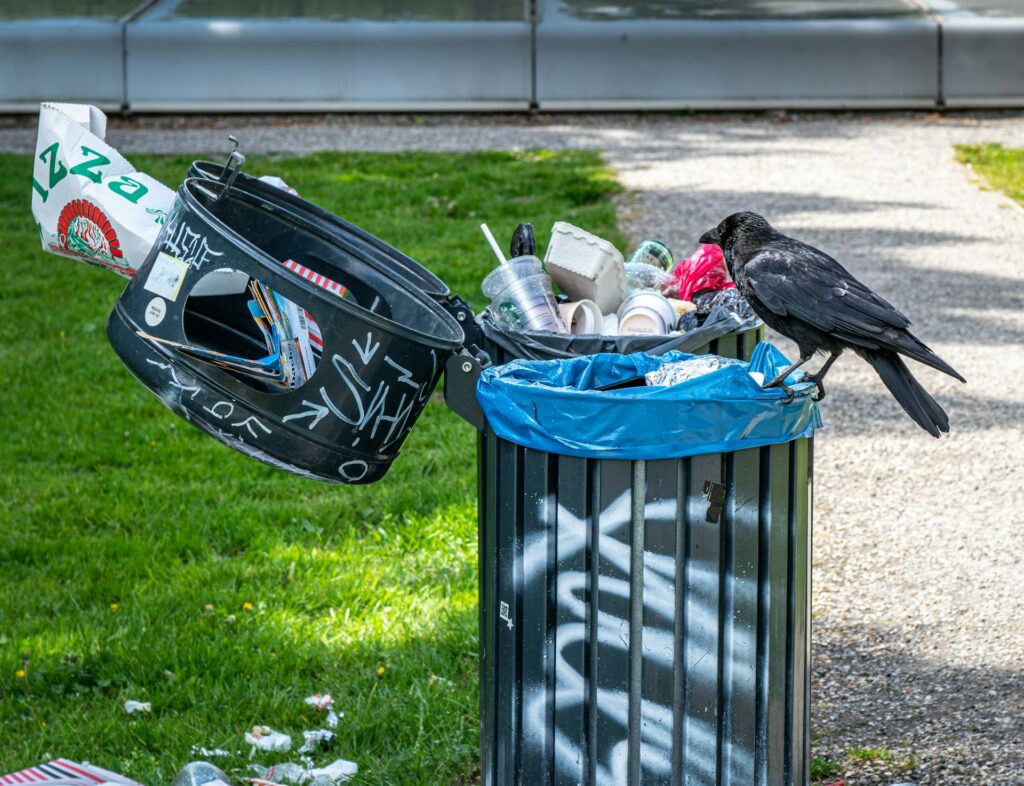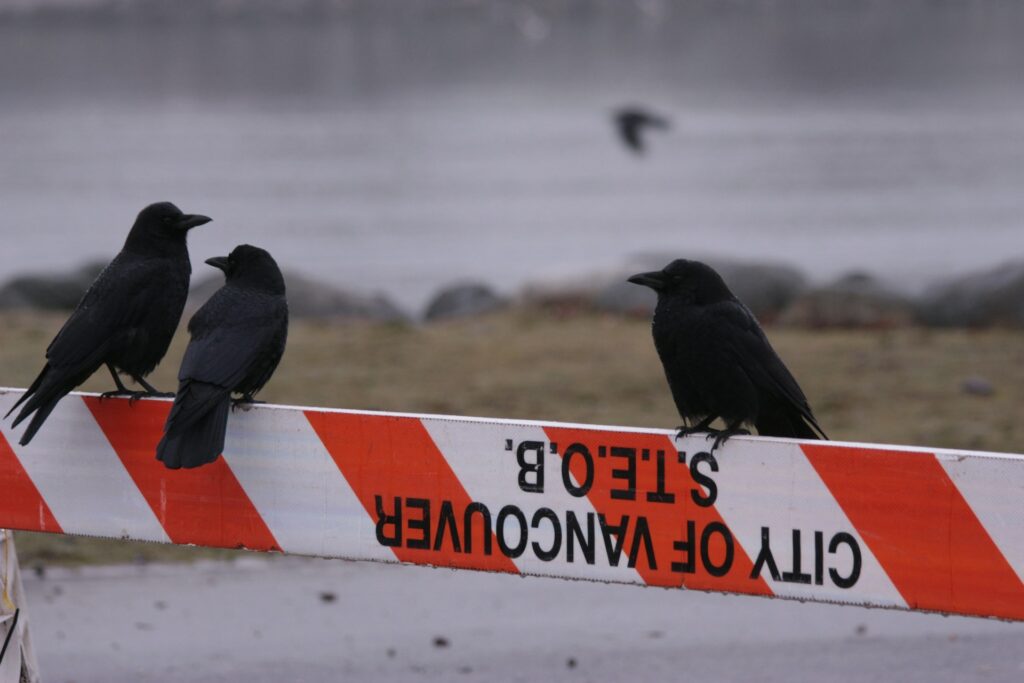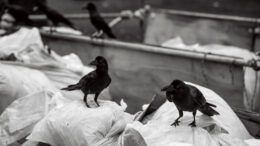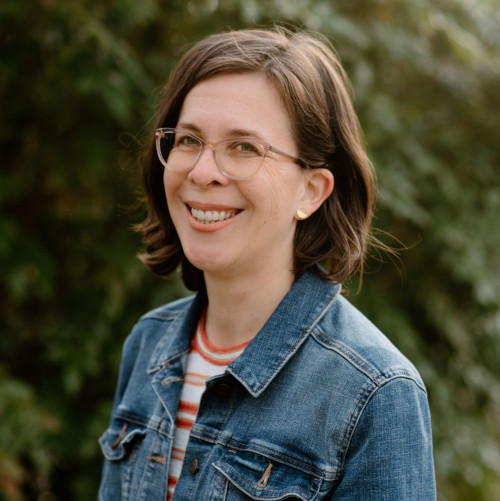Last summer a team of researchers from the University of British Columbia headed into the field to study the food web linking a local bird community. But their destination wasn’t a temperate rainforest or rocky coastline — it was urban Vancouver on trash day.
Their goal: untangling hidden ways in which food in the city’s trash cans may shape its ecosystem.
The project is the brainchild of Dan Forrest, a Ph.D. student at the university’s Institute for Resources, Environment and Sustainability, who says urban trees held special significance for him while he was growing up in Philadelphia.
“I depended on these urban parks and green spaces to get a bit of respite from the urban hustle and bustle,” he says.
But not everyone enjoyed the same benefits he did. “I saw that these spaces weren’t distributed evenly everywhere around the city.” Some people, often those in richer, whiter neighborhoods, had greater access than others to urban nature. Even then, he worried the trend would expand and worsen. “I knew that urbanization was fast becoming one of the major forces for change in our world.”
When he arrived in Vancouver as a grad student, he and other students and faculty members noticed large numbers of crows and gulls coming onto campus to raid trash cans. How, they wondered, was the easy availability of food waste affecting the urban ecosystem?
It’s not a small question, as 30-40% of food in the United States — and as much as 60% in Canada — ends up uneaten and in the trash. This can be a bonanza for urban wildlife — including crows, who tend to thrive in cities.

But if food waste attracts unusual numbers of these gregarious, intelligent birds, could it create ripple effects through the rest of the local bird community?
In addition to eating trash, crows often prey on other birds, raiding their nests to eat eggs and young. According to Forrest, Vancouver’s robin population has been declining for decades, while black-capped chickadees have been holding steady or even increasing; he wonders if this could be, at least in part, because robins’ open cup nests are more vulnerable to crows than chickadee nests hidden in tree cavities.
These questions eventually became the focus of his dissertation research, which began last summer. Forrest and a group of undergraduate research assistants woke up before sunrise to walk through neighborhoods across the city, note trash receptacles with visible food waste, and observe the behavior of birds in the area. “What were they doing? Were they eating, calling, interacting with another species?” says Forrest. “And if they were eating something, what was it?”
He’s still analyzing the data, but it’s already clear that human trash “is making up a substantial portion of crows’ diet [in Vancouver],” says Forrest, and “they’re congregating in areas where there’s lots of food waste.”
The next step will be to connect the presence of crows with overall urban bird diversity across Vancouver neighborhoods, drawing on a range of data sources. In addition to nest predation, “there could be a number of different reasons why there are fewer [bird] species around where there are crows — because they’re scared of the crows, or they’re being outcompeted by the crows,” says Forrest.

Forrest is already in touch with the city government, and if it does turn out that crows attracted by trash are having negative impacts on bird communities, he hopes to work with officials to make changes that will benefit both birds and people, such as introducing more crow-resistant trash bins or improving trash pickup services in lower-income areas — changes that could be made in other cities, too.
Forrest’s project adds to a rich body of research on the dynamics of urban bird communities. Past studies have uncovered complex relationships between bird feeders (another artificial source of food for wildlife), nest predators, and songbirds’ nesting success. And as Forrest has noticed in both Philadelphia and Vancouver, socioeconomic and racial inequality among human communities affects birds, too — for example, neighborhoods in Los Angeles where Black people were once prevented from buying homes by “redlining” still have greater bird diversity than historically Black neighborhoods, which tend to have denser housing and fewer trees.
Although it’s still in the early stages, other experts are intrigued by his project’s potential. Desirée Narango of the Vermont Center for Ecostudies, an ornithologist and urban ecologist who is not involved in Forrest’s research, says he is embarking on “an ambitious study, which is definitely admirable. I think it’s exciting that he’s already having conversations with the city, because that’s how urban ecology can really make a difference, by actually having these conversations, determining what sort of actions can help people and wildlife, and then making it happen.”
Forrest notes that his research isn’t intended to vilify crows — or any other species. Crows may be a threat to smaller birds, but as Forrest acknowledges, a lot of people like them, too. On his surveys, he met people who carried peanuts in their pockets to feed crows while walking in their neighborhoods.
“I don’t necessarily want to make a judgment call on behalf of the community,” Forrest says. Instead, he wants to help residents make better-informed decisions by revealing the hidden dynamics of the urban ecosystem they’re part of. That may start by paying better attention to what we eat — and what we, as a society, throw away.


